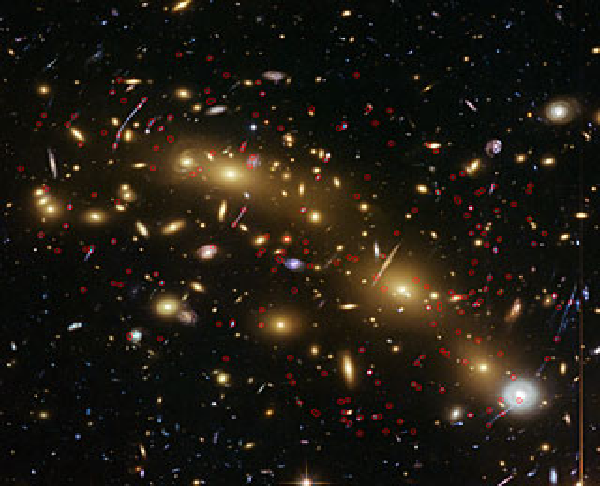Hubble Helps Astronomers Map Massive Galaxy Cluster
| Paula Marie Navarra | | Jul 25, 2014 09:51 AM EDT |
Astronomers managed to precisely map out the mass of MCS J0416.1-2403, a massive galaxy cluster 160 trillion times the mass of the Sun, using the Hubble Space Telescope.
Mathilde Jauzac, from the Astrophysics and Cosmology Research Unit in South Africa, said that the depth of the data allowed them to see faint objects and identify more galaxies than ever before.
Like Us on Facebook
She explained that even though strong lensing magnifies the galaxies they are still very far and faint. The depth of the data they had can identify distant background galaxies.
Astronomers identified 51 new multiple galaxies around the cluster, quadrupling the number found in previous surveys.
Jean-Paul Kneid, a colleague of Jauzac, said that although they've known how to map a cluster of galaxies using strong lenses for more than twenty years, it's taken them a long time to get a telescope that can make deep and sharp observations on a system as complicated as MCS J0416.1-2403
The astronomers modeled the mass of both normal and dark matter within MCS J0416.1-2403 by studying 57 galaxies, making their map twice as good as any previous models of the cluster.
They found out that the MCS J0416.1-2403, which is said to be over 650,000 light-years across, has 160 trillion times mass compared to the sun.
Astronomers also measured the warping of space-time with high precision by pinpointing where the mass resides within the cluster.
Kneib discussed by using a Frontier Fields observation and gravitational lensing techniques they opened up a way to precisely characterize an object despite its distance.
He stressed that they will not stop there, they would still want to get a full picture of the mass by also using weak lensing measurements.
©2015 Chinatopix All rights reserved. Do not reproduce without permission
EDITOR'S PICKS
-

Did the Trump administration just announce plans for a trade war with ‘hostile’ China and Russia?
-

US Senate passes Taiwan travel bill slammed by China
-

As Yan Sihong’s family grieves, here are other Chinese students who went missing abroad. Some have never been found
-

Beijing blasts Western critics who ‘smear China’ with the term sharp power
-

China Envoy Seeks to Defuse Tensions With U.S. as a Trade War Brews
-

Singapore's Deputy PM Provides Bitcoin Vote of Confidence Amid China's Blanket Bans
-

China warns investors over risks in overseas virtual currency trading
-

Chinese government most trustworthy: survey
-

Kashima Antlers On Course For Back-To-Back Titles
MOST POPULAR
LATEST NEWS
Zhou Yongkang: China's Former Security Chief Sentenced to Life in Prison

China's former Chief of the Ministry of Public Security, Zhou Yongkang, has been given a life sentence after he was found guilty of abusing his office, bribery and deliberately ... Full Article
TRENDING STORY

China Pork Prices Expected to Stabilize As The Supplies Recover

Elephone P9000 Smartphone is now on Sale on Amazon India

There's a Big Chance Cliffhangers Won't Still Be Resolved When Grey's Anatomy Season 13 Returns

Supreme Court Ruled on Samsung vs Apple Dispute for Patent Infringement

Microsoft Surface Pro 5 Rumors and Release Date: What is the Latest?










